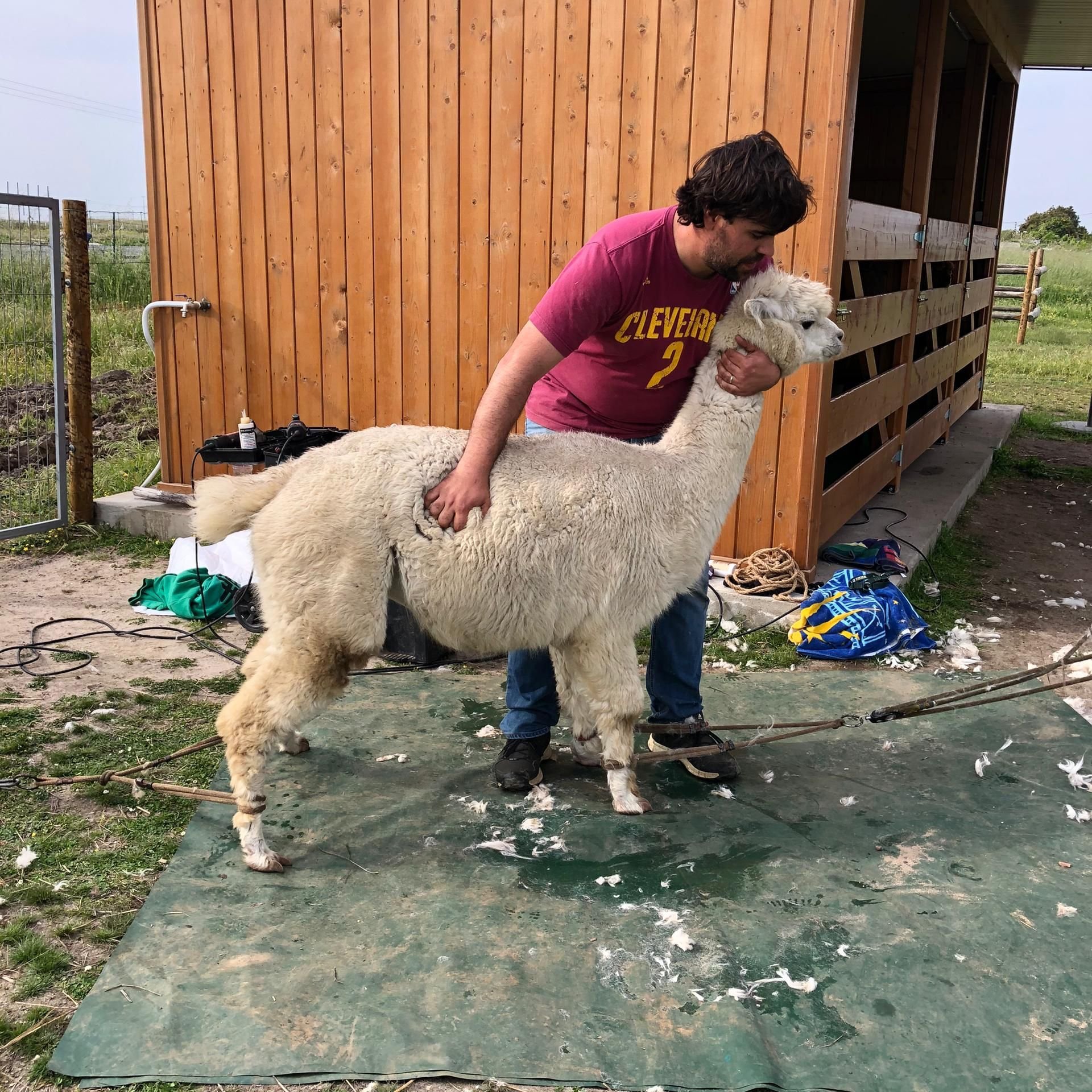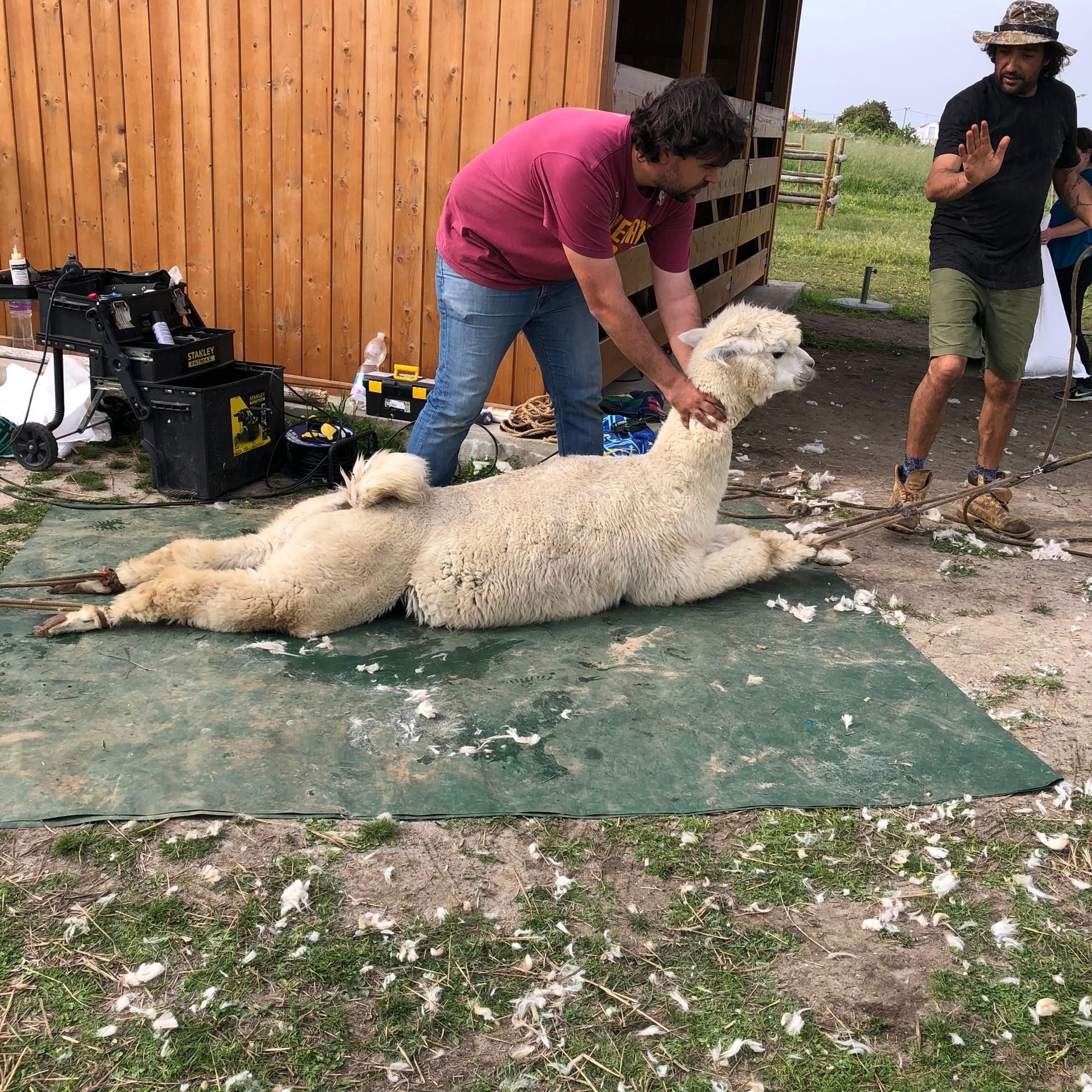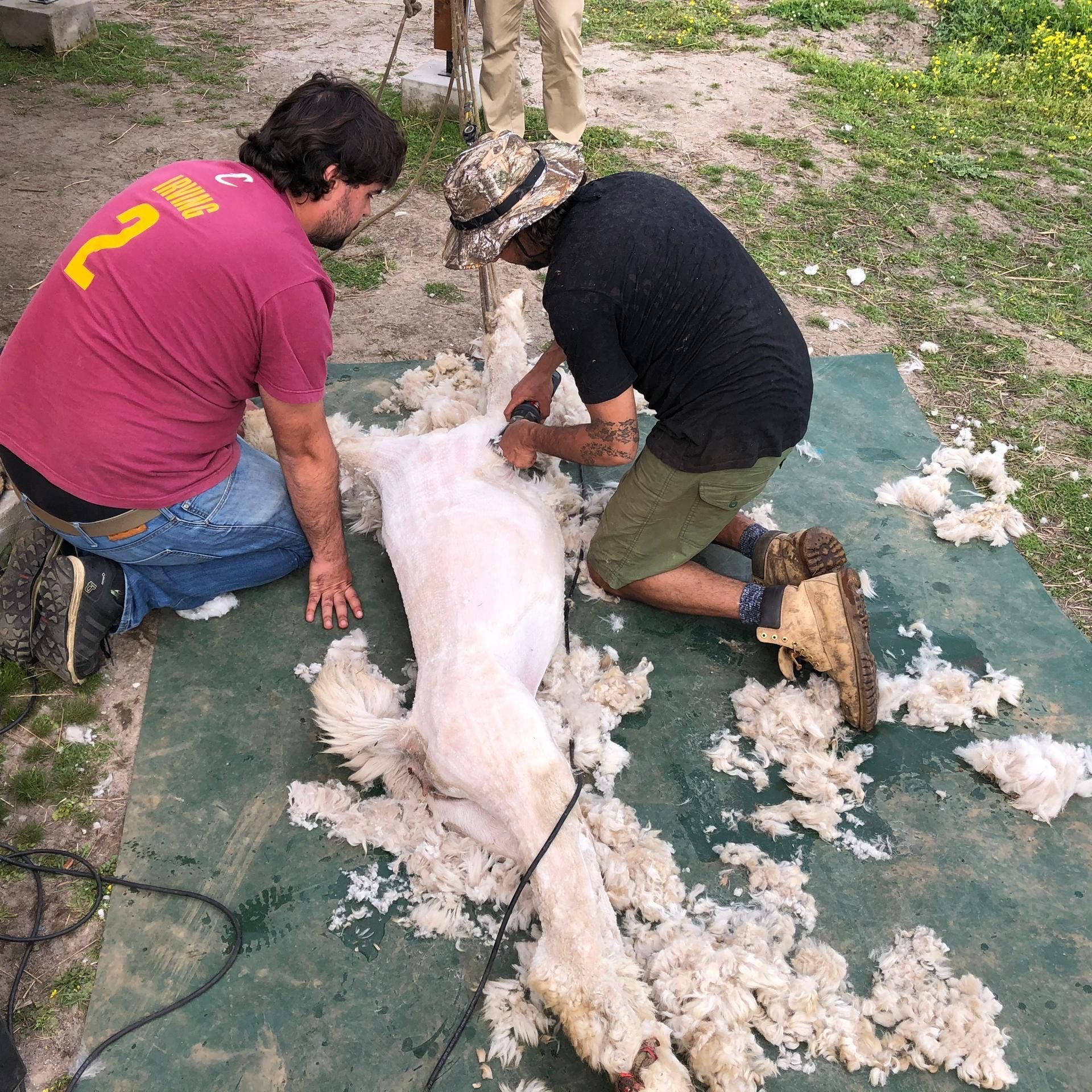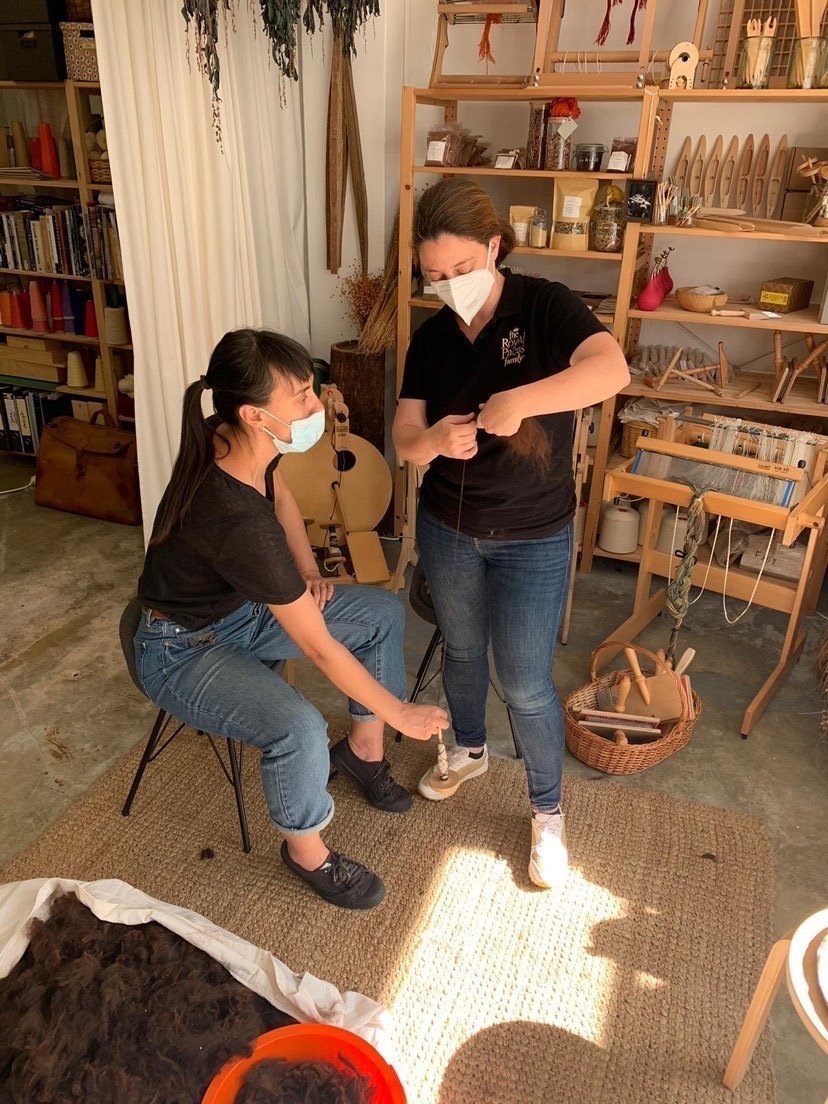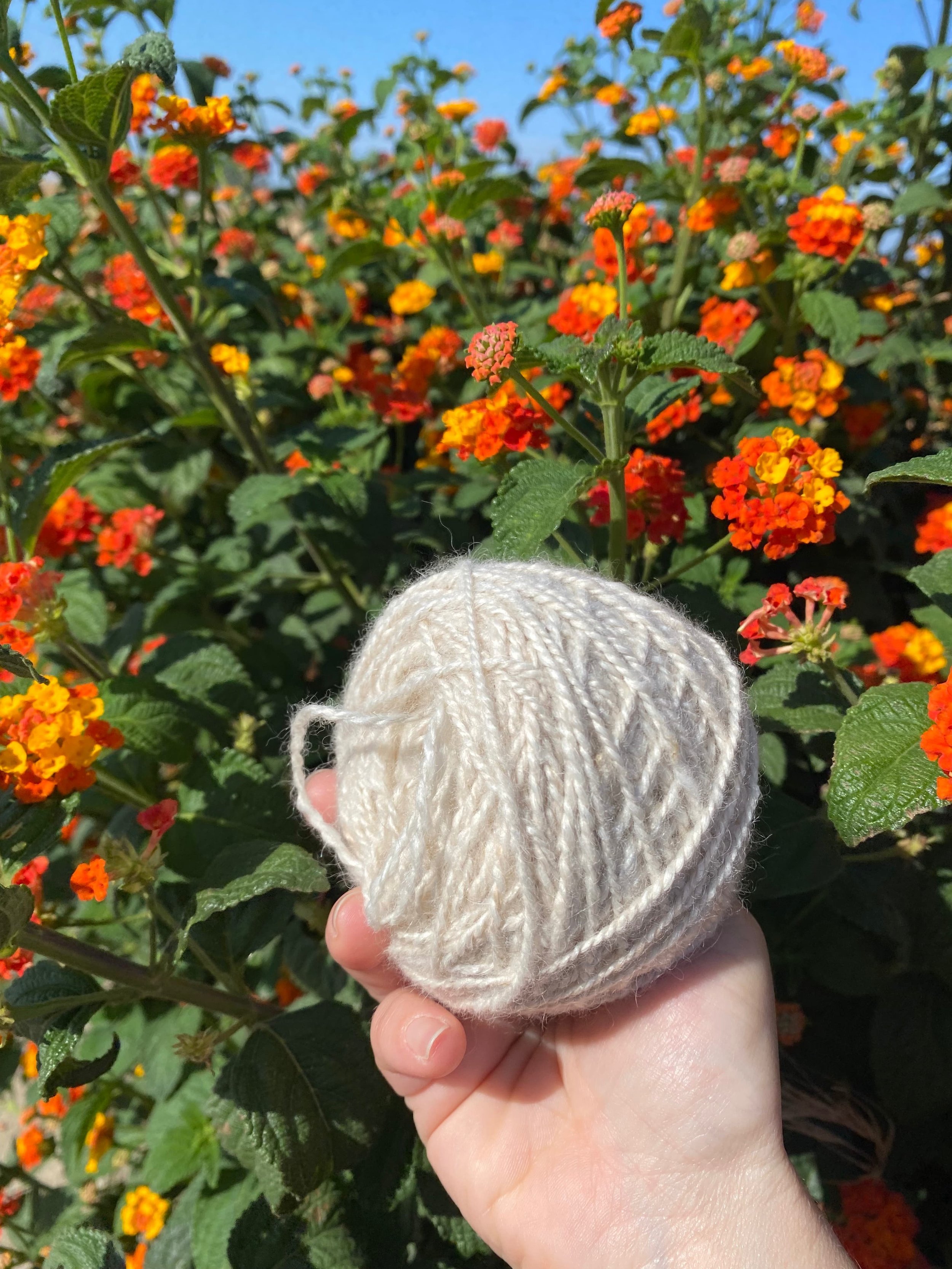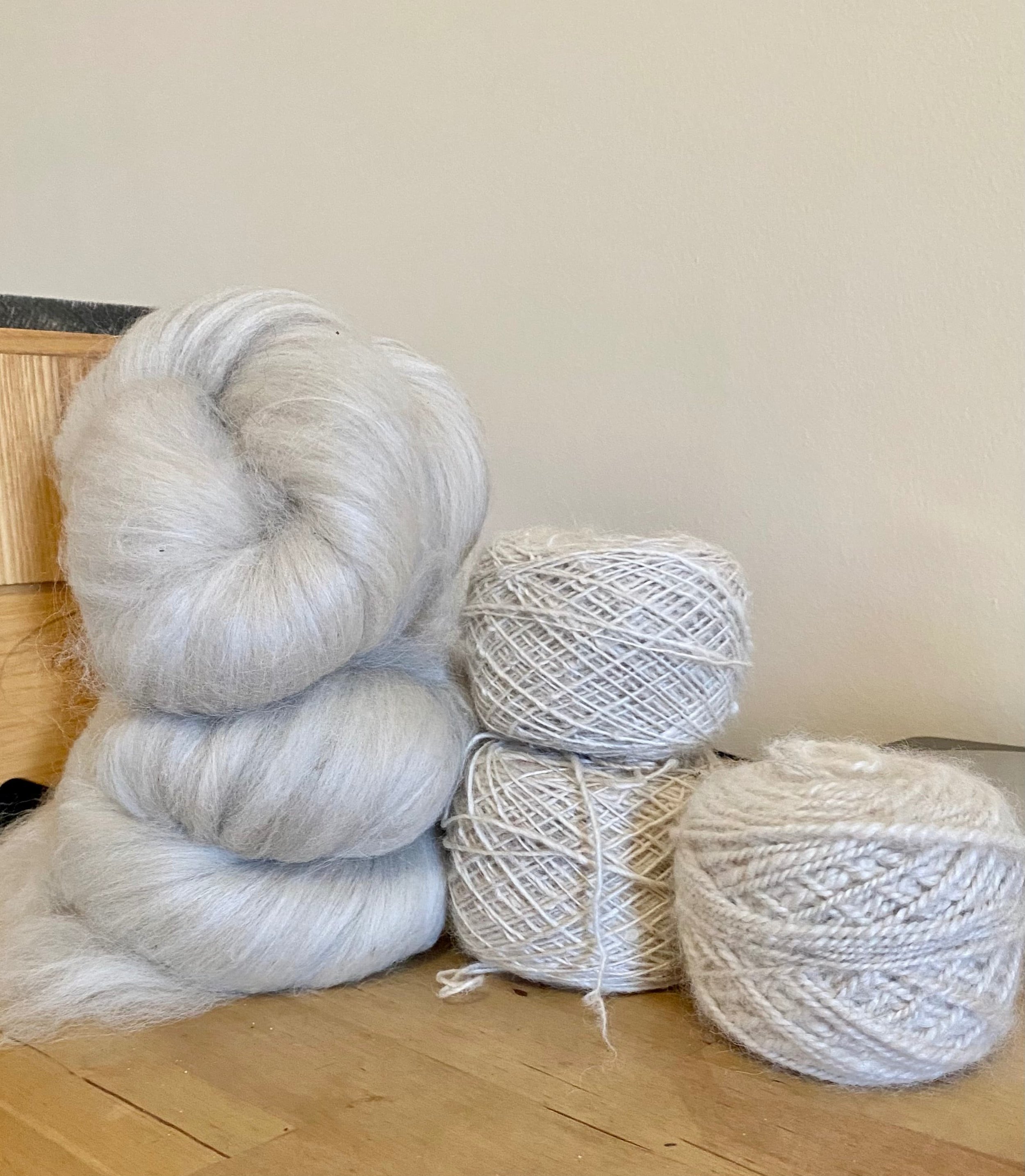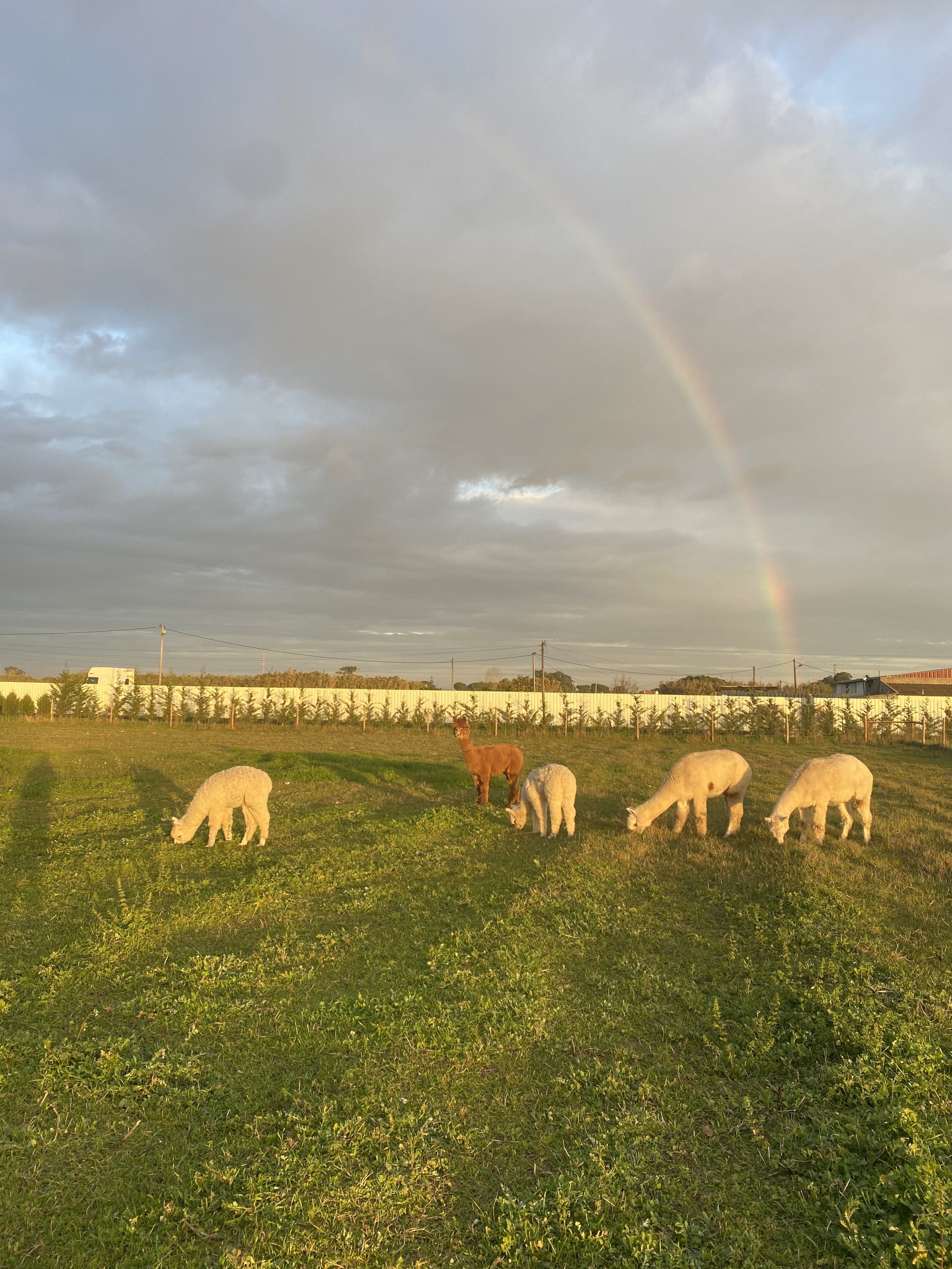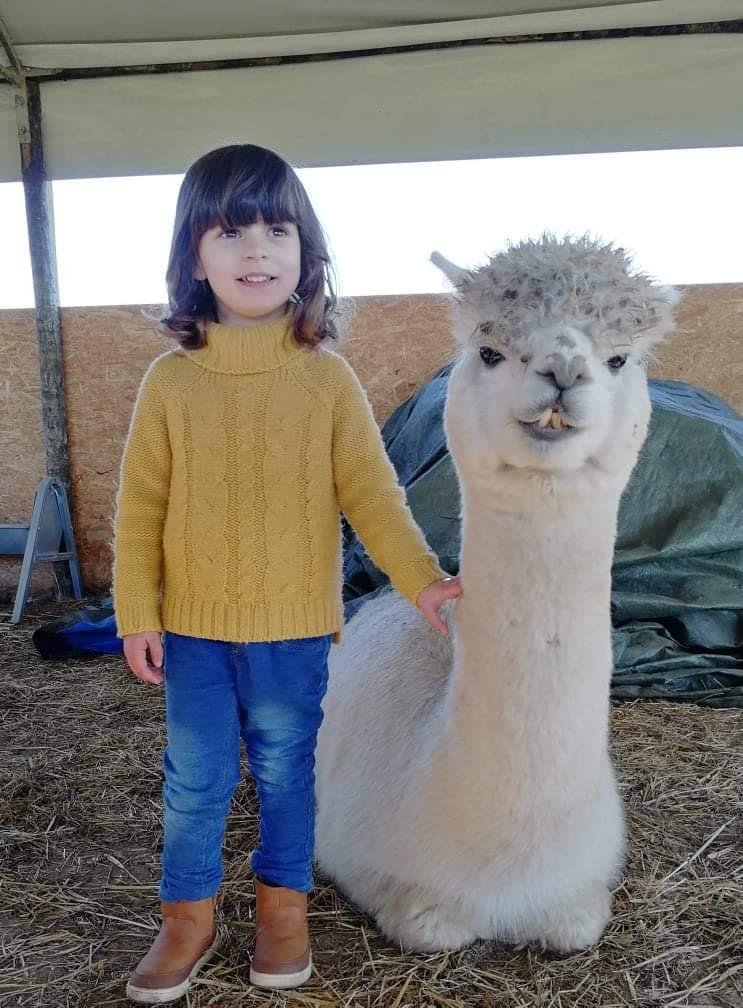Saber fazer students: Royal'Pacas
Francisco with his royal alpacas.
In recent times we've seen the growth of so many of our students, each putting into practice what they've learned in Saber Fazer in their own way, so much so that it's impossible not to share their stories (and the pride we feel) here!
This is going to be a new series that you'll see around here, in which we reconnect with people who have taken our training courses and find out more about what they've been doing with what they've learned here and how they've evolved since then.
We hope their stories inspire you!
Patrícia and Francisco from Royal'Pacas.
Today, we're going to tell you a little about the Royal'Pacas Family, a project in Montijo that is home to royal alpacas and their servants, Patrícia and Francisco!
Patrícia, an aerospace engineer from Castelo Branco, works in digital banking. Francisco, born and raised in Porto, is an environmental engineer and works in the field of renewable energies. They met in Lisbon and now live on a farm in Montijo, where they carry out various activities based on their royal alpacas: visits, workshops and even organizing alpaca shearing, among other services.
In 2021, Patrícia and Francisco came to Saber Fazer for personalized training on the processing of Alpaca fiber, which was something they were curious about and would like to develop, since they have wonderful fiber every year.
Around here, we're more specialists in Portuguese wool, but it's impossible to resist alpaca, especially when it comes from “premium” animals for fiber production and is brought to Porto in person. That's why, for Patrícia and Francisco, we created training tailored to their specific needs, to help them explore the textile side of this new adventure.
Today, the textile processing side is not only fully incorporated into the activities they do at Royal'Pacas, but has also become an important part of Patrícia's life, as she has fallen completely in love with spinning and weaving.
We love following their adventures on Instagram and especially seeing Patrícia becoming more and more entangled in textiles! There's no turning back now.
Patricia with her royal alpacas.
Where did the idea of having alpacas come from?
There was an Australian series that I [Patrícia] followed, called “McLeod's Daughters”, about two sisters who had a large farm and one of them had two alpacas as pets. As I didn't know the animal, I looked it up.
I thought what I found on the internet at the time was very interesting because it's an animal with many qualities. It has a very attractive temperament, because it's curious and very comical. And it has that fiber which, I later realized, was luxurious, with immense potential. That's how my dream of keeping alpacas came about, but the idea always remained on the level of utopia. It was a refuge, but it wasn't feasible.
When I met Francisco, one of the things he asked me was “if you didn't work at the bank and had no limitations, what would you like to do?”. And of course, alpacas came up in the conversation.
Years later, with the farm and no plans for it, Francisco remembered my passion for alpacas and we started talking about it. Initially, we thought we'd only have 2 or 3 as pets, but then things escalated...
You ended up deciding to bring the alpacas from England. Did you try to find alpacas in Portugal?
Yes, but we didn't have much success. In 2020, when we started looking, I remembered a Dutch gentleman I had seen years before at the Pet Festival, who had alpacas. One of the things that struck me most when I first saw the alpacas live was a table that was next to the fence: it had a sample of raw sheep's wool and a sample of alpaca fiber, and people were invited to touch both. It was a “click” moment! Those fibers are cotton candy! It really makes you want to squeeze it!
That moment affected me so much that he was our first contact here in Portugal.
He referred us to someone who had alpacas for sale, but that place was our first surprise: we realized that alpacas aren't all friends and aren't all the same. Finally, we went to Monte Frio Alpacas where Lisa showed us a facet that pleased us much more: the alpacas are very happy, freer and very well trained.
With no opportunities to buy and in the middle of a pandemic, we decided to look online and managed to find a lady in England who helped us with the whole process of choosing, buying and transporting our alpacas. She gave us the contact details of the breeder who ended up selling us our alpacas.
The moment the royal alpacas arrived in Montijo.
It must have been difficult to choose alpacas from a distance. Was having alpacas with good fiber one of your goals?
We wanted a balance between good temperament and good fiber. The breeder we chose sent us not only the entire genealogical lineage of the alpacas, but also analyses of the length and thickness of the fiber, several samples and good photographs. She even told us what parameters we should use to assess the fiber and what documents we should ask for to prove the quality of the fiber. In England, it's normal to ask for these documents, as the breeders analyze the fiber every year.
Of course, we took a big risk because everything was done remotely. But these two people, the mentor who we turned to first and who recommended the breeder to us; and the breeder who sent us photos, analyses and samples, seemed like honest people we could trust.
Once the alpacas had been chosen, how did the adventure of bringing them to Portugal go?
We found companies that specialized in transporting alpacas, but the price was obscene. We ended up hiring, with some trepidation, a horse transporter who does a lot of transportation here in Portugal, and everything went very well.
The alpacas came very well looked after and when they arrived they started grazing straight away.
The biggest difficulty was registering the alpacas in Portugal, as there are no well-defined protocols.
Given that alpacas are not native to our country, what are the specifics of having them here, in terms of feeding and veterinary care?
At first we thought that alpacas were low-maintenance animals! That all they needed was pasture and hay and that they were very resistant to all diseases. After studying the feasibility of keeping alpacas in Portugal, we realized that it wasn't that simple. As they are animals native to South America, all the grass, pasture and even the sun there is completely different to what we have here, so the diet has to be adapted and supplemented.
Francisco made a very complete Excel table with the various rations on the market and the nutritional needs of alpacas. We came to the conclusion that the rations used in Portugal aren't good enough.
In the meantime, a breeder in the south of Spain told us that he uses a Belgian ration for camelids that has two components: one part camelid food and another part mineral and vitamin supplement, which is given daily and helps to supplement their needs.
Another difficulty we encountered was the lack of alpaca veterinarians in Portugal. Alpacas never complain, they are stoic animals. What's more, because they have that high layer of fiber, it's harder to notice thinness and weight loss.
They have a very different immune system to other animals and one of the things that affects them a lot is internal parasites. Veterinary concerns in Portugal are different to those in the UK and, as such, they didn't know what to recommend. So we had to research solutions ourselves.
We found two vets who helped us a lot. One for exotics and the other for livestock. Our aim is to have vets who understand that these are exotic animals with different needs, and who are willing to research and learn.
Royal'Pacas alpaca fiber.
Solving the issue of shearing in Portugal for an animal as specific as the alpaca can't have been easy either.
A month after their arrival, we immediately began to think about how we were going to resolve this issue. I had already watched some shearing videos on YouTube to familiarize myself with the process and the conclusion I came to was that shearing a sheep and shearing an alpaca are completely different. The anatomy is different, the skin is different, the blade has to be different.
Fortunately, we found a shearer who lives in France and does a shearing tour of Europe. We managed to get in touch with other small alpaca breeders in Portugal so that the shearer wouldn't just come to shear ours. In 2021, he came to shear around 50 alpacas (he usually shears around 1,000 in a season), so for him, this was nothing. But he liked Portugal so much that he even bought a plot of land here this year. We've sorted that out too.
The shearer also does something that is crucial for us: he makes a physical assessment of the animal, cuts the nails and even gives tips on the quality of the fiber.
Once the alpacas were shorn, you found yourselves with fiber in your hands to work with. How did you find Saber Fazer?
Initially, we wanted to find a workshop like the ones we saw in the UK, which would process the fiber so that we could then spin, make skeins and perhaps learn to weave.
We met Saber Fazer through a friend who told another friend about your work. We didn't come to you, you came to us! And this meeting changed everything: our goal, our interest, our knowledge. Taking the course at Saber Fazer made all the difference.
How was your training at Saber Fazer? Were you motivated to start working with your alpaca fiber?
We chose to do private training with Alice in 2021 because we wanted to learn specifically about alpaca fiber. We felt that the communication was always appropriate to what we were most interested in, which made us very involved.
Another positive factor of the Saber Fazer training was the openness we felt: “We don't have alpacas here, but let's learn!”. We hadn't encountered that attitude in Portugal before.
The whole experience was very good. The space is very nice, welcoming, with its characteristic smell.
The training, because it was so good, had two effects: firstly, it made Patrícia find a hobby, because she got a huge taste for spinning. Then it completely demystified alpaca fiber.
It made us understand better all the qualities of this wonderful fiber that we had and also how we could make it sellable and launch it into the world. Much of this knowledge is also passed on by us in the visits we receive at the farm.
How do you apply the knowledge you've acquired here to your activities at Royal'Pacas?
We shared with the visitors what we learned in Saber Fazer: that the fiber has no lanolin, so it doesn't need to be washed immediately to be worked; that alpaca fiber is hollow inside, which makes it warmer than sheep's wool.
We also talk about how they are processed, explaining all the procedures: shearing, washing, carding, spinning or felting, showing the carding machine and the spinning wheel. Some people love this part of the visit!
We also talked about the characteristics of the fiber, why it is so good and yet not so popular commercially.
Some people who come to visit already know about alpaca fiber, others not so much. When I show them the fiber, I like them to have the same experience I had, so I encourage them to touch it to understand how light and wonderful it is.
The Saber Fazer training has given us a lot of “want to do”. The alpacas were already useful to us for visits, in order to balance out the expenses we have with them, but now we have the possibility of transforming the fiber of our animals into tangible objects.
For example, it made us want to take the fiber that Aragon gives us and turn it into something tangible. We were already going to have to feed him, shelter him, take care of him; the fiber was almost a bonus. But I started to look at the things I made with his fiber and I saw Aragon in them. So when I show the felt alpaca I've made on our visits and say, “Here's Aragon!”, that's profound for me.
At Royal'Pacas, Patrícia also organizes workshops during which she teaches about alpaca fibre and its processing.
Aragon
At Royal'Pacas, Patrícia also organizes workshops during which she teaches about alpaca fibre and its processing
At Royal'Pacas, Patrícia also organizes workshops during which she teaches about alpaca fibre and its processing
This “wanting to do” also involved acquiring specific equipment so that you could actually “do” and develop your activities on the farm. How did you view this investment and the choice of equipment? Was it important for what you do during your visits and activities?
In fact, the purchase was decided even before there was an actual plan. The desire to continue what we had learned was so strong that it became obvious that we had to buy equipment in order to practice and see how far we could go. Faced with the investment and the pleasure it gave me to continue perfecting all the steps, showing the whole process became a component of the visits, enriching the whole experience.
The sale of products is planned for the near future, but at present we don't have the means to do so.
The equipment purchased included a Classic Carders Standard 120tpi carding machine , a Louet S10 Scotch tension spinning wheel, a Louet Erica 50/4 loom, as well as various accessories such as twills, spindles, bobbins, etc.
Alpaca fibre carded with the Classic Carder Standard 120tpi.
Spun yarn on Patricia's Louet S10 ScT spinning wheel.
But we know that Patrícia's training didn't stop at fiber processing and spinning. She became so entangled in textiles that she decided to go further...
Yes, I once again had the privilege of expanding my textiles course through Saber Fazer. I did weaving training with Guida Fonseca and it was wonderful to complete the cycle and end up with a product ready to use. Guida's depth of knowledge and the dedication with which she teaches was undoubtedly another milestone.
At the moment I have one of George's scarves, another of Camila's and another of William's (yes, these are some of our alpacas) and I'm buzzing with ideas for new pieces. The possibilities are endless. The hard part is finding the time to get the projects off the ground, as I start with raw wool and have to card, spin, wash and weave.
One of the pieces woven by Patrícia, with yarn from her own alpacas.
One of the pieces woven by Patrícia, with yarn from her own alpacas.
Patrícia during her weaving training.
William
Camilla
Has this adventure of acquiring alpacas and undergoing specialized training in processing the fibre changed your outlook on the world of textiles in any way?
It's changed a lot. When a friend of ours came here, he said what I was thinking at the beginning: how do you turn an alpaca into yarn? Showing the whole process, from carding to spinning, how the threads get involved and end up creating something so resistant... I'm not saying it's magic because we're engineers, but it's almost!
Links to explore:
- Royal'Pacas Family website;
- Royal'Pacas Family Instagram;












